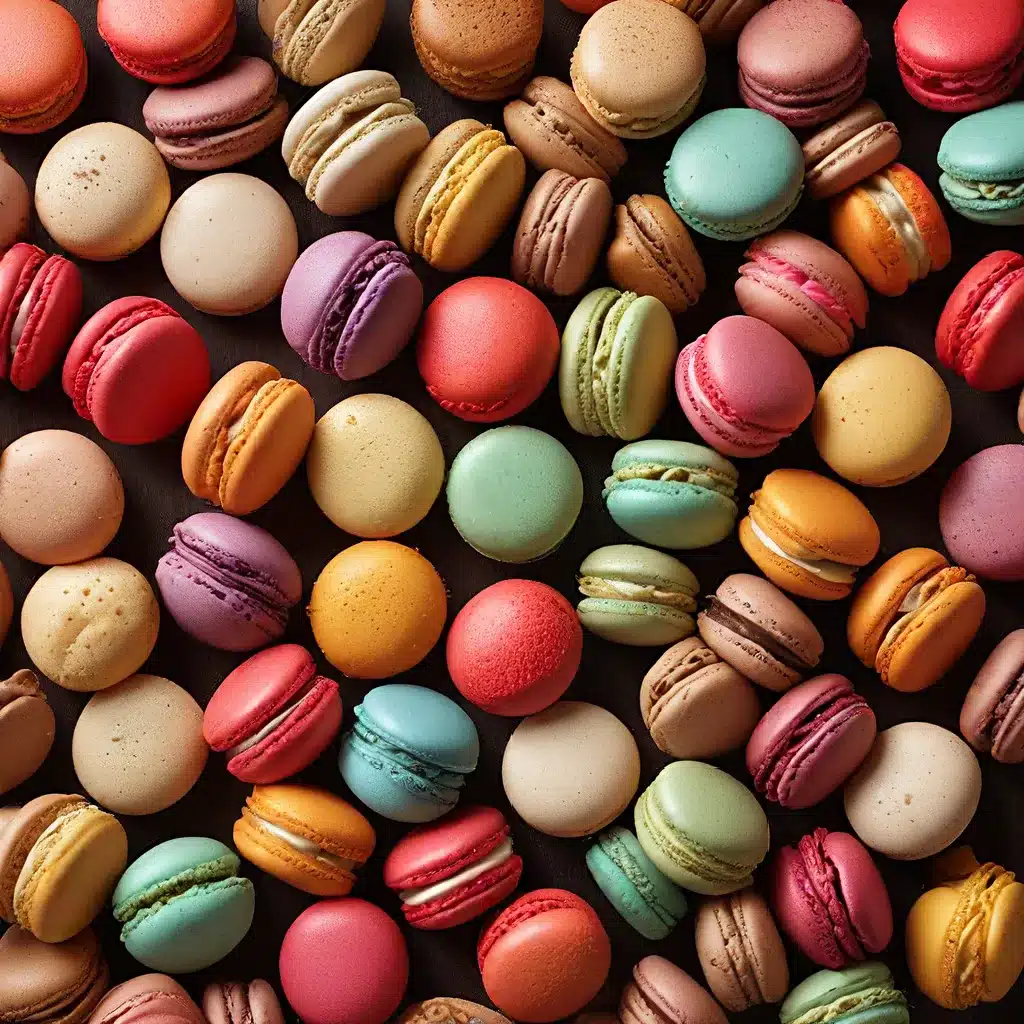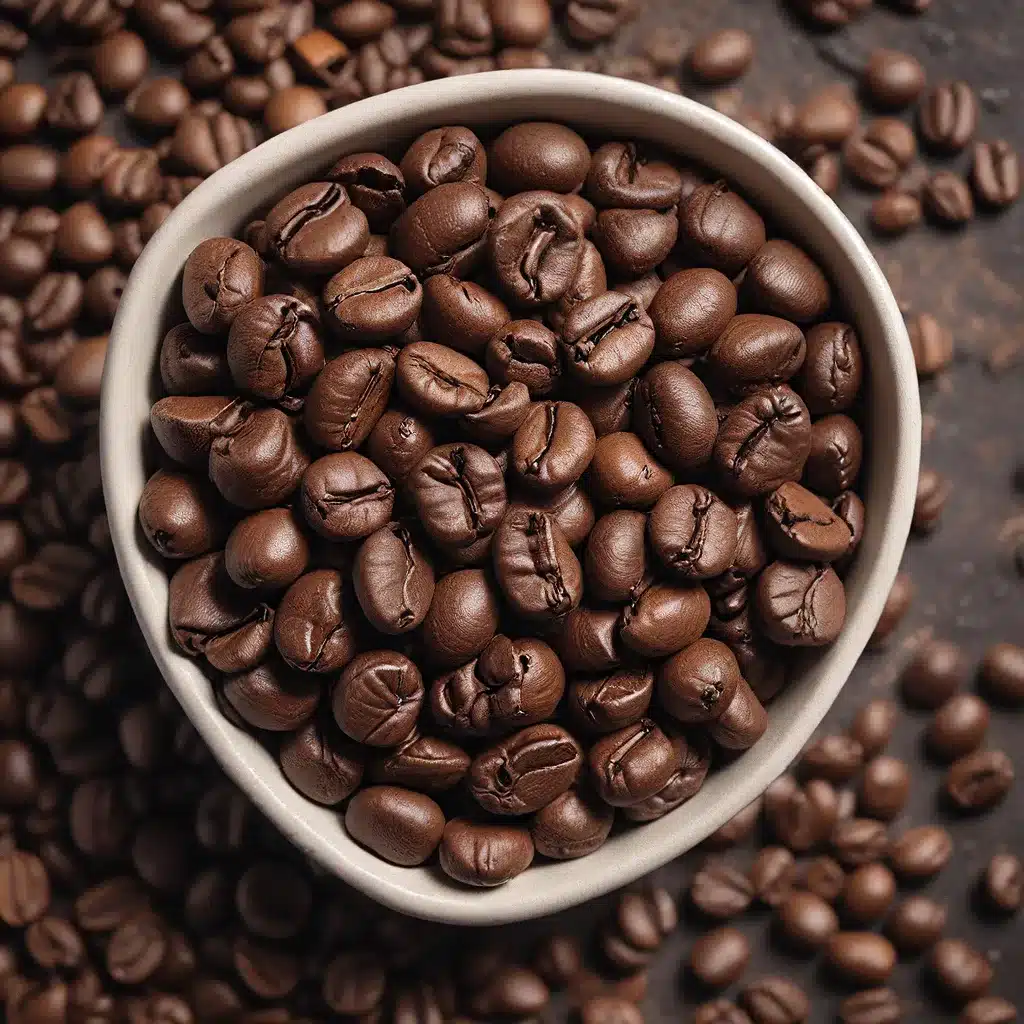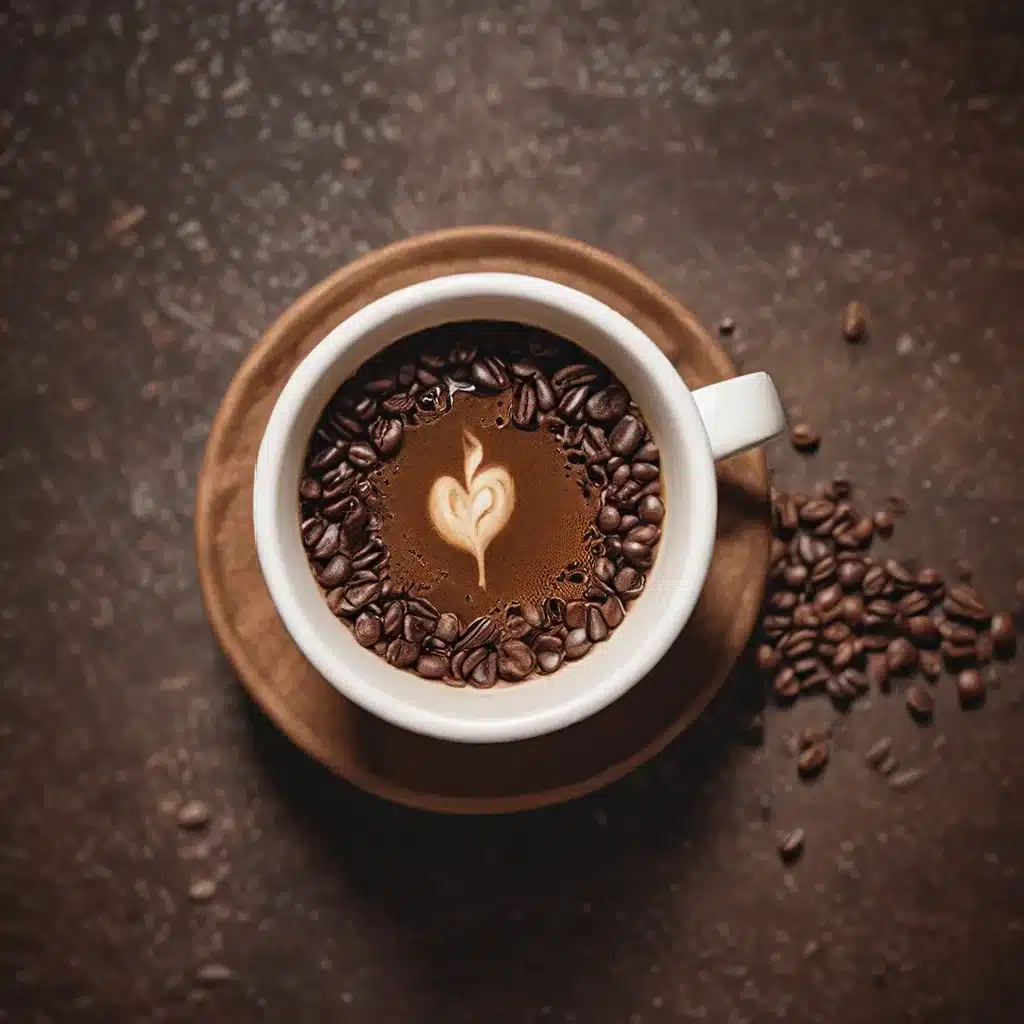
Ah, the macaron – that delicate, colorful confection that has captured the hearts and taste buds of dessert enthusiasts around the world. As I embark on this delectable journey, I can’t help but feel a sense of excitement and wonder. After all, these petite treats are not just a sugary indulgence; they are a testament to the rich culinary heritage of France, a canvas for artistic expression, and a symbol of joie de vivre.
Let’s dive into the captivating world of French macarons, shall we? Prepare to be enchanted by their vibrant hues, enticed by their exquisite flavors, and captivated by the stories they hold.
The Macaron’s Storied Past
The story of the macaron begins not in the bustling streets of Paris, but in the serene cloisters of Italian monasteries. Tracing its roots back to the 8th century, these meringue-based confections were initially simple cookies made of almond powder, sugar, and egg whites. It’s said that they were introduced to France in the 16th century, thanks to the culinary influence of Catherine de Medici, who brought them from Italy when she married King Henry II of France.
However, the macaron we know and love today – those delicate, double-decker discs filled with a layer of buttercream, jam, or ganache – is a relatively recent innovation. This transformation is credited to the early 20th century, particularly to Pierre Desfontaines of the famed Ladurée patisserie in Paris. With his ingenious idea to sandwich the delicate shells with a luscious filling, he elevated the humble macaron into an extraordinary treat.
The evolution of the macaron into a staple of French patisseries is a testament to the ingenuity and creativity of French bakers. Over time, this little cookie not only became a symbol of French culinary expertise but also a canvas for flavor experimentation and artistic expression. Today, macarons are not just a sweet treat; they are an icon of French culture and a testament to the enduring appeal of simplicity transformed into elegance.
Macarons in French Celebrations
In France, where traditions and tastes intertwine, macarons have found a special place in the heart of celebratory events. These delicacies are not just sweets; they are a symbol of joy and festivity.
At weddings, for instance, macarons often take center stage in the form of a macaron tower or pièce montée, replacing or accompanying the classic wedding cake. This elegant tower, meticulously built with an array of colorful and delicious macarons, is not only a visual spectacle but also a symbol of the sweetness and richness of life that the newlyweds are about to embark upon.
Birthdays, too, see these confections as a staple. In lieu of traditional birthday cakes, macarons add a touch of French sophistication to the celebration. Whether as part of a dessert table or as individual party favors, they offer a personalized and elegant touch with flavors and colors tailored to the guest of honor’s preferences, including popular choices like salted caramel and hazelnut praline.
The role of macarons in French baptisms and christenings is particularly noteworthy. Traditionally, these events are marked with sweets that symbolize innocence and new beginnings, and what could be more fitting than a macaron? Its delicate structure and subtle sweetness resonate with the purity and joy of the occasion, making it a favorite among the most famous macarons served at such events.
Beyond these personal celebrations, macarons have also carved a niche in professional and corporate events. From product launches to company anniversaries, they add a touch of luxury and sophistication, reinforcing the refined and cultured image many companies wish to project. Macaron shops often cater to these events, providing bespoke creations that align with the theme and elegance of the occasion.
The cultural significance of macarons in French celebrations can be seen as a reflection of the country’s love for gastronomy and its penchant for infusing everyday life with a touch of elegance and art. Each bite of these petite treats, from the sweet filling to the exquisite shell, is a reminder of life’s sweeter moments and the beauty in the small details that make celebrations memorable.
Spotting the Perfect Macaron
Identifying a high-quality macaron is both an art and a science. It starts with the appearance. A perfect macaron, often seen in the best macaron shops in Paris, boasts smooth, shiny shells with a ruffled circumference known as the “foot.” This “foot” – a hallmark of expert baking – indicates a well-aerated batter and precise oven temperature control. The shells should be uniform in size and shape, suggesting the baker’s meticulousness.
Texture is another critical factor. The ideal macaron offers a delicate balance – a slight crunch as you bite in, giving way to a soft, almost melting interior. This contrast is the result of masterful baking and precise ingredient ratios. Overbaking leads to hardness, while underbaking results in a chewy, dense texture – both are signs to look for.
The filling is where the magic truly happens. It should be flavorful but not overpowering, complementing the shells without overshadowing them. High-quality macarons feature fillings like buttercream, ganache, or jam that are smooth, rich, and consistent in texture. The filling should not be overly sweet and should extend almost to the edge of the shells, providing the perfect ratio of cookie to cream. The salted butter caramel filling, for instance, offers a perfect balance of sweet and savory, making it a popular choice among delicious macarons.
Color and appearance play a significant role as well. The best macarons are often vibrant, but they avoid artificial brightness. A subtle, natural hue indicates the use of quality ingredients and a respect for the artistry of macaron making. The overall look should be inviting, with a clean, professional finish that speaks to the baker’s skill and attention to detail.
In summary, spotting the perfect macaron involves assessing its appearance, texture, filling, and color. These elements, when combined harmoniously, create not just a sweet treat but a small work of art ready to captivate your senses and leave a lasting impression on your palate. This is what makes the experience of finding and choosing to eat macarons in Paris an unforgettable part of any culinary adventure.
The Macaron’s Flavor Spectrum
The world of macarons is a palette of flavors and colors, each variety telling its own unique story. Classic flavors like vanilla, chocolate, and raspberry are beloved for their timeless appeal. These traditional choices are not just about taste; they’re a nod to the roots of pastry making, where simplicity and depth of flavor are prized.
Yet, innovation has introduced a spectrum of new flavors, transforming the macaron scene. From the tartness of passion fruit to the aromatic lavender, these contemporary varieties cater to a range of palates. Seasonal flavors also play a significant role, with patisseries often featuring special editions that reflect the ingredients and moods of each season. Think chestnut in autumn or a refreshing mojito flavor in summer, offering a sensory experience that aligns with the time of year.
The colors of macarons are as important as their flavors. A true feast for the eyes, they range from pastel hues to deep, rich tones. Each color is carefully chosen to represent the flavor within, creating a visual appetite for the taste experience to follow. The vibrancy of a lemon macaron, for instance, hints at its zesty, citrusy heart, while a delicate pink suggests the soft, floral notes of a rose cream filling.
Unique and experimental flavors have also gained popularity, reflecting the culinary creativity and boldness of modern patisseries. These include combinations like salted caramel, matcha green tea, or even more adventurous ones like truffle or foie gras. Such unusual pairings challenge the traditional palate, offering a gourmet twist to this classic French confection.
In the world of macarons, the choice of flavors and colors is not just about taste; it’s about experiencing a moment of joy and surprise. Whether sticking to the classics or venturing into new culinary territories, each macaron flavor and color offers a glimpse into the endless possibilities of this beloved treat. Flavors like hazelnut praline or salted butter caramel have become particularly famous, enticing those looking to buy macarons with their rich and indulgent profiles.
Parisian Macaron Legends
Our delightful journey through the streets of Paris, a city celebrated for its culinary artistry, has unveiled a treasure trove of the best macarons in the city. Each patisserie we visited offered its own unique take on what could be considered the finest macarons, with an array of tantalizing flavors that left our taste buds yearning for more.
Among these, the salted caramel macarons stood out, striking a perfect balance between sweet and savory – a flavor that has become a quintessential part of the Parisian macaron experience. While exploring these delicious macarons in Paris, we also delved into the nuances of macaron cost, which varies from one patisserie to another, reflecting the quality and exclusivity of their offerings.
The variety of macaron flavors we encountered was astounding, from the classic chocolate and vanilla to the more adventurous and seasonally inspired creations, each telling its own story of taste and craftsmanship. This exploration not only showcased the best of what Paris has to offer in terms of these exquisite confections but also highlighted the city’s undying love for this elegant dessert.
The journey of the macaron from a simple treat to a symbol of culinary luxury is marked by the influence of certain key figures and patisseries. At the forefront of this transformation is the renowned Ladurée, founded in 1862. This Parisian patisserie is often credited with reinventing the macaron into its modern form, with Pierre Desfontaines‘ decision to join two macaron shells with a creamy ganache filling in the early 20th century marking a pivotal moment in the history of this confection.
Another pivotal establishment in the macaron’s rise to fame is Pierre Hermé Paris. Dubbed “The Picasso of Pastry” by Vogue, Pierre Hermé revolutionized the macaron world with his inventive flavors and artistic presentation. His approach to macaron making is akin to haute couture, blending unexpected flavors and textures to create something truly unique and luxurious. His creations, such as the salted caramel macaron, have become iconic, contributing to the reputation of the best macarons available.
Beyond these famous names, numerous patisseries and bakers across Paris and France have contributed to the macaron’s popularity. Each has added its own twist, be it through flavor innovation, artistic presentation, or by simply maintaining the high standards of traditional French pastry making.
The evolution of the macaron’s status as a luxury treat is also tied to its association with high-end fashion and exclusivity. This confection has become more than just a dessert; it’s a statement of sophistication and fine taste, often seen at glamorous events and in the company of the fashion elite. The “macaron sisters,” as some fans affectionately call them, are a nod to the variety and sibling-like similarity yet distinctiveness of each flavor and color.
As a result, the macaron has transcended its role as a mere pastry to become a cultural and culinary icon. The individuals and establishments behind its rise have not only perfected the art of macaron making but have also woven it into the fabric of French gastronomic legacy.
Mastering the Art of Macaron Making
After reading about the exquisite macarons of Paris, you may be inspired to try your hand at creating these delicate confections. Here’s a simple recipe to get you started on your macaron-making experience:
Macaron Recipe
Ingredients:
– 1 cup (100g) powdered sugar
– 1 cup (100g) almond flour
– 3 egg whites (about 90g)
– 1/4 cup (50g) granulated sugar
– 1/4 teaspoon cream of tartar (optional)
– 1 teaspoon vanilla extract (optional)
– Food coloring (optional)
Instructions:
- Preheat your oven to 300°F (150°C). Line two baking sheets with parchment paper.
- Mix Dry Ingredients: Sift together the powdered sugar and almond flour, discarding any lumps.
- Whisk Egg Whites: In a separate bowl, whisk the egg whites and cream of tartar (if using) until soft peaks form. Gradually add the granulated sugar and continue to whisk until stiff peaks form. If using, add the vanilla extract and a few drops of food coloring.
- Fold: Gently fold the dry mixture into the egg whites until just combined.
- Pipe: Transfer the mixture to a piping bag and pipe small rounds onto the prepared baking sheets.
- Rest: Let the piped macarons sit at room temperature for 30 minutes to an hour, allowing them to form a skin.
- Bake: Bake for 17-20 minutes or until they easily lift off the paper.
- Fill: Once cooled, sandwich two macarons with your choice of filling, such as buttercream, ganache, or jam.
Remember, making macarons is an art that requires practice, so don’t be discouraged if your first batch isn’t perfect. Each attempt brings you closer to mastering the art of French baking.
Sharing the Macaron Love
Now that we’ve explored the captivating world of Parisian macarons, including the best places to buy macarons and the range of flavors from salted caramel to hazelnut praline, I’d love to hear from you. Are there flavors or patisseries that have delighted your palate? Maybe you’ve discovered a hidden gem in Paris or a local bakery that makes macarons reminiscent of those from the City of Light. Share your experiences in the comments below – your recommendations and stories could be the start of someone else’s sweet adventure.
If you’ve been inspired to try your hand at making macarons, I’m eager to hear about it. Post your home-baked creations and tag us on social media. There’s a whole community of macaron lovers and aspiring bakers here to support and celebrate your culinary journey.
Don’t forget to explore our other blog posts for more insights into French patisseries and Parisian food adventures. Whether you’re planning a trip to Paris or dreaming about it, let our stories guide your taste buds through the charming streets of this gastronomic haven. Engage with us on social media too – follow our journey, share your own, and stay updated on the latest in culinary explorations. Let’s keep the conversation going and continue to celebrate the art of French baking and the joy of discovering new flavors together.
And remember, the next time you find yourself in Paris or near a patisserie with a flair for French baking, take a moment to appreciate the macaron. Beyond its aesthetic charm and bursts of flavor, it represents a continuous journey of culinary artistry, making it an essential part of any Parisian adventure.
Sips Coffee House invites you to embark on your own macaron odyssey, whether it’s in the heart of Paris or in your own kitchen. Savor the flavors, marvel at the colors, and let these delicate confections transport you to the enchanting world of French pastry perfection.















